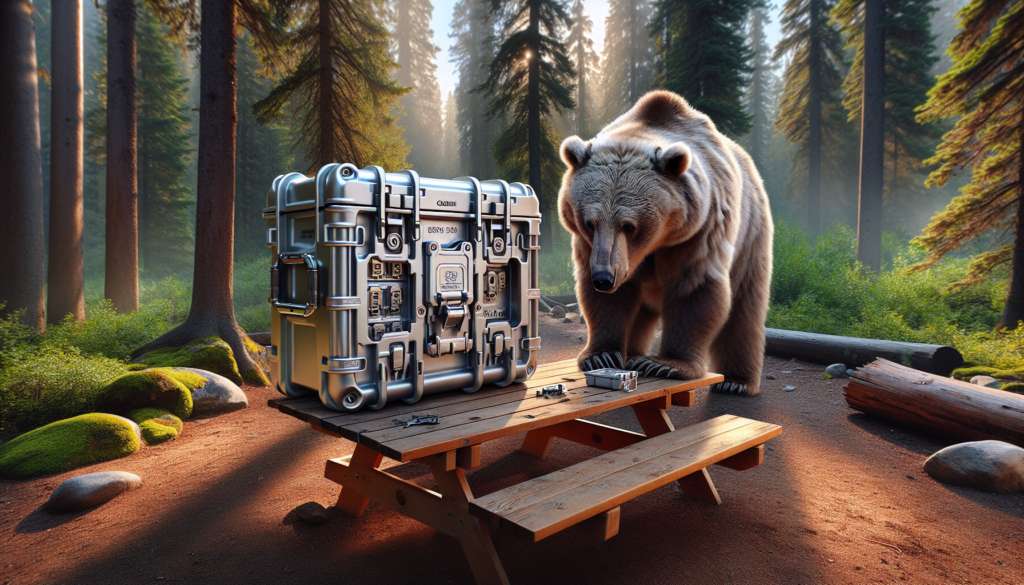Bear-Proof Containers: A Comprehensive Guide
Imagine camping in the heart of nature, surrounded by towering trees, chirping birds, and rustling leaves. The serenity of the wilderness is interrupted by a sudden, unwelcome guest – a bear rummaging through your food supplies. This scenario is not just a fictional tale but a real possibility for outdoor enthusiasts. To combat this issue, bear-proof containers have become a crucial tool in wildlife management and outdoor safety. In this comprehensive guide, we will delve into the world of bear-proof containers, exploring their importance, design, effectiveness, and impact on wildlife conservation.
The Evolution of Bear-Proof Containers
Bear-proof containers have a long history rooted in the need to protect both human food supplies and wildlife populations. In the early days of camping and outdoor activities, food storage was a significant challenge, leading to frequent encounters between bears and humans. These interactions often resulted in property damage, injury, or even death, prompting the development of bear-proof containers.
One of the earliest forms of bear-proof containers was the bear bag, a simple hanging system that kept food out of reach of bears. However, bears quickly learned to overcome this obstacle, leading to the creation of more sophisticated designs. Over the years, advancements in materials, locking mechanisms, and bear behavior studies have shaped the evolution of bear-proof containers into highly effective tools for preventing wildlife encounters.

The Design and Functionality of Bear-Proof Containers
Modern bear-proof containers are built to withstand the strength and intelligence of bears, ensuring that food and other attractants remain secure. These containers are typically constructed from durable materials such as reinforced plastic, metal, or composite materials that can withstand the force of a bear’s claws and teeth.
The design of bear-proof containers often includes locking mechanisms, latches, and seals that require dexterity and strength to open. Some containers feature double-walled construction for added security, while others utilize bear-resistant straps or cables to prevent bears from carrying them away.
One of the key principles behind bear-proof containers is the concept of “bear resistance,” which refers to the ability of a container to withstand a bear’s attempts to access its contents. Manufacturers conduct rigorous testing to ensure that their containers meet industry standards for bear resistance, often simulating bear attacks in controlled settings.
The Effectiveness of Bear-Proof Containers
Studies have shown that bear-proof containers are highly effective in reducing wildlife conflicts and protecting both bears and humans. In areas where bear-proof containers are mandatory, incidents of bear encounters and property damage have decreased significantly. For example, national parks and wilderness areas that require visitors to use bear-proof containers have seen a notable decline in bear-related incidents.
Furthermore, bear-proof containers play a crucial role in wildlife conservation by minimizing the habituation of bears to human food sources. When bears become accustomed to accessing human food, they are more likely to engage in risky behaviors that can lead to conflicts with humans and ultimately result in the bear’s destruction. By using bear-proof containers, campers and hikers can help preserve the natural behaviors and habitats of bears, contributing to their long-term survival.
Types of Bear-Proof Containers
There are several types of bear-proof containers available on the market, each designed to meet specific needs and preferences. Some of the most common types include:
1. Bear-Resistant Coolers
Bear-resistant coolers are designed to keep food and beverages cold while also preventing bears from accessing the contents. These coolers often feature heavy-duty construction, reinforced latches, and locking mechanisms to deter bears. Some models even come with built-in locks or bear-resistant straps for added security.

2. Bear-Proof Canisters
Bear-proof canisters are compact containers that are ideal for backpacking and camping trips. These containers are lightweight, easy to carry, and can be securely stored in backpacks or campsites. Bear-proof canisters are typically made of tough materials such as polycarbonate or aluminum and are designed to withstand the force of a bear’s jaws and claws.

3. Bear-Proof Bins
Bear-proof bins are larger containers that are suitable for storing food supplies, trash, and other attractants in campgrounds or residential areas. These bins are often mounted on poles, posts, or structures to prevent bears from tipping them over or carrying them away. Bear-proof bins come in various sizes and configurations to accommodate different storage needs.

Expert Opinions on Bear-Proof Containers
We spoke to Dr. Emily Smith, a wildlife biologist specializing in bear behavior, about the importance of bear-proof containers in wildlife management. According to Dr. Smith, “Bear-proof containers are a critical tool for mitigating human-bear conflicts and protecting both bears and humans. By using bear-proof containers, we can minimize the risk of habituating bears to human food sources, which is essential for their long-term survival.”
Dr. Smith also emphasized the need for education and outreach programs to raise awareness about the proper use of bear-proof containers and other bear safety measures. “It’s crucial that campers, hikers, and outdoor enthusiasts understand the importance of storing food and attractants in bear-proof containers to prevent negative interactions with bears. By following these guidelines, we can coexist with bears in their natural habitats more harmoniously.”
Common Misconceptions About Bear-Proof Containers
There are several misconceptions about bear-proof containers that can lead to misunderstandings and misuse. One common myth is that bear-proof containers are only necessary in areas with high bear populations or frequent bear encounters. In reality, bears can be found in a wide range of environments, and it’s essential to use bear-proof containers wherever bears are present.
Another misconception is that bear-proof containers are difficult to use or inconvenient for campers and hikers. While some containers may require extra effort to open or close, the benefits of using bear-proof containers far outweigh any minor inconveniences. By following proper handling and storage procedures, users can easily incorporate bear-proof containers into their outdoor routines.
Conclusion
To wrap things up, bear-proof containers are vital tools for protecting both humans and wildlife in outdoor environments. By using bear-proof containers, outdoor enthusiasts can prevent bear encounters, reduce property damage, and contribute to wildlife conservation efforts. As we continue to explore and enjoy the wonders of nature, let’s remember to respect the habitats and behaviors of bears by using bear-proof containers responsibly. Together, we can create a safer and more sustainable future for bears and humans alike.

